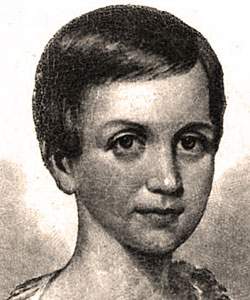Emily Dickinson (American National Biography)
Scholarship
Dickinson grew up in a Connecticut Valley environment that drew close linkages among religion, intellectual activity, and citizenship. She studied at Amherst Academy, then greatly influenced by the scientist-theologian Edward Hitchcock of Amherst College, and worshiped at the First Church (Congregational) during the period of revivalistic evangelical Protestantism known as the Second Awakening. Her father played an active role in the town's political and business affairs, served as treasurer of the college, and was a leading figure in the church community even though not actually converted and eligible for membership until the revival of 1850. Her mother had joined the church when pregnant with Emily, her second child… Letters written during Dickinson's one year at Mount Holyoke Female Seminary (1847-1848) reflect tendencies evident even in her academy years: maintenance of close family ties and intense friendships with chosen intimates, preference for solitude over society, intellectual curiosity, pride in her ability to write wittily, and hesitation to commit herself to Christ in the manner expected by her friends and spiritual counselors, including Mount Holyoke's redoubtable foundress, Mary Lyon.
Jane Donahue Eberwein, " Dickinson, Emily," American National Biography Online, February 2000, http://www.anb.org/articles/16/16-00453.html.
Emily Dickinson, Poetry (American National Biography)
Scholarship
Although interest in one or more lovers continues, as does attention to the poet's religious quest and to her quiet subversion of gender assumptions, Emily Dickinson's poems steadily gain recognition as works of art, both individually and collectively, especially when read in her original fascicle groupings, which establish not just her unquestionable brilliance but her frequently underestimated artistic control. The regard Dickinson has won in the little more than a century since her poems introduced her to the world has established her as the most widely recognized woman poet to write in the English language and as an inspiration, both personally and in terms of craft, to modern women writers. As a voice of New England's Protestant and Transcendental cultures in fruitful tension and of the spiritual anxieties unleashed by the Civil War (during which she wrote the great majority of her poems) and as an avatar of poetic modernism, Emily Dickinson now stands with Walt Whitman as one of America's two preeminent poets of the nineteenth century and perhaps of our whole literary tradition.
Jane Donahue Eberwein, "Dickinson, Emily," American National Biography Online, February 2000, http://www.anb.org/articles/16/16-00453.html.



